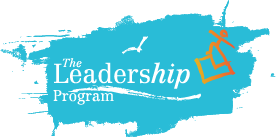Research has shown what teachers have always known through experience. More positive social behavior in the classroom leads to improved academic performance. But what has perplexed many educators is how exactly one should go about achieving more positive social behavior in the classroom. It turns out that developing social-emotional skills is the key and it takes intentional practice throughout the school year.
According to casel.org, the foremost resource for Social Emotional Learning (SEL), “SEL is the process through which all young people and adults acquire and apply the knowledge, skills, and attitudes to develop healthy identities, manage emotions and achieve personal and collective goals, feel and show empathy for others, establish and maintain supportive relationships, and make responsible and caring decisions.”
In that spirit, here are some social emotional learning activities that can be used included in your lesson plans to foster SEL development.
Rose and Thorns:
This is my most-used warm up before diving into the main activity. When I first learned of Rose and Thorns I thought it was too indulgent and took too much time out of my teaching time. But when I saw the impact it had in the classrooms of other teachers I quickly changed my tune. That said, this may be best for small groups.
Rose and Thorns is very simple and definitely engages students, as it is a moment for them to speak about their day in a structured manner. It is best if you can form a circle with the group, including yourself as a part of the circle.
Then have each participant say their name and one thing that went well today (the rose) as well as one thing that didn’t go well (the thorn).
It’s best if you can provide an example, thus modeling sharing with the group. For example, “My rose is that when I came into the school office today there were muffins for the teachers. My thorn is that I stepped on a piece of gum on the sidewalk and it took forever to get it off”. Let students know that each person has less than one minute to share.
Circle of Hands:
In this activity, students practice group decision making and they co-create community agreements related to the behaviors that will be acceptable during class time. This can also be a great tool for conflict resolution, since if students have a role in creating the norms for the class they will have more buy-in when they break those norms.
For materials, you should have a large piece of butcher paper and enough markers for each student. Let students know you will be working together today to create norms for the class. You will then have each student draw an outline of their hand on the paper so that the hands form a circle with some space in the middle for you to write in.
Please also lead by example by drawing your hand on the paper first. Now ask your students for examples of behaviors they want to see in the classroom.
Examples can include “Respect”, “Once Mic”, “Listening”, etc. Write down their answers in the middle of the circle of hands. Once you have a brief, but complete list, have students sign inside of the drawing of their own hand. This is now a contract that you all will refer back to to offer praise for achieving the agreements and also to offer corrective feedback or consequences for breaking the agreements.
Cooperation Toss:
This activity enables students to develop their cooperation, relationship skills and teamwork through a kinesthetic challenge. For materials, you need more “tossables” (i.e. crumpled pieces of paper, foam balls, etc.) than you have students.
Start by letting the students know that they will practice working together and problem solving as a group. Tell the students that they will be passed a ball and when they catch the ball they need to pass it to someone who has not yet received it. When the last person has caught the ball they will then pass it to you.
Each student needs to remember who they caught the ball from originally as well as who they tossed it to. Once the cycle has been completed, that cycle will be repeated with more and more “tossables”.
It helps for the first round to have all students who have not yet caught the ball to hold their arms out in front of them so students who are tossing the ball know who has not yet caught one. Once one round has successfully been completed, you can begin adding balls to the mix until all of them are in rotation.
When the challenge leads to balls being dropped, stop the game and ask students for their ideas on how the group can improve. Then ask them to focus on applying the ideas they chose to see how much they can improve and how many “tossables” can be in circulation at one time.
Spectogram:
This is an excellent method for students to share their opinions and emotions in a way that is low risk and fun. It helps to develop social awareness without the need to speak to communicate.
Start by placing a piece of paper with the word “Agree” on one end of the room and a piece of paper with the word “Disagree” on the opposite side. Tell students that you will say a series of sentences. If they agree strongly they should walk to the “Agree” sign.
If they disagree strongly they should walk to the “Disagree” sign. If they are not sure or are simply a “Maybe” they should stand in between the signs. If they marginally agree they can stand between the middle and the “Agree” sign.
Then make a series of statements, starting with very low risk statements to get them started. A possible sequence of statements might include, “I like pizza”, “I am a sports fan”, “I believe I am a good cook”, “I believe everyone has equal opportunities”, “I feel confident helping others when I see them being bullied”, etc.
Mood Meter:
In order to manage our emotions, we first need to identify and recognize them in ourselves. The Mood Meter encourages students to reflect and share where their current emotional state is as indicated on an x-y axis (for visual examples, Google “Mood Meter”). In a Mood Meter, there are four quadrants.
- The lower left quadrant indicates low energy, unpleasant mood (i.e. sadness, melancholy, etc).
- The lower right quadrant indicates low energy, pleasant mood (relaxed, reflective, etc).
- The upper left quadrant indicates high energy, unpleasant mood (angry, anxious).
- And the upper right quadrant indicates high energy, pleasant mood (excited, happy).
By sharing where their current emotional state fits on the mood meter, students get a sense of where they are in the group and the instructor can get a sense of the needs of the class. The next step is learning to manage those emotions. This connects well with the growth mindset in education, as well. I recommend this primarily for elementary school but other ages can also benefit.




Comments [0]
Click here to read/write comments